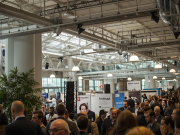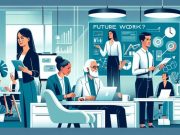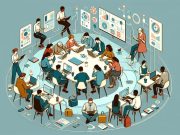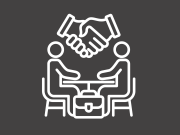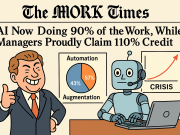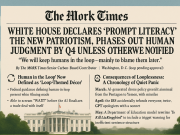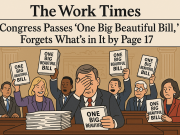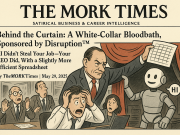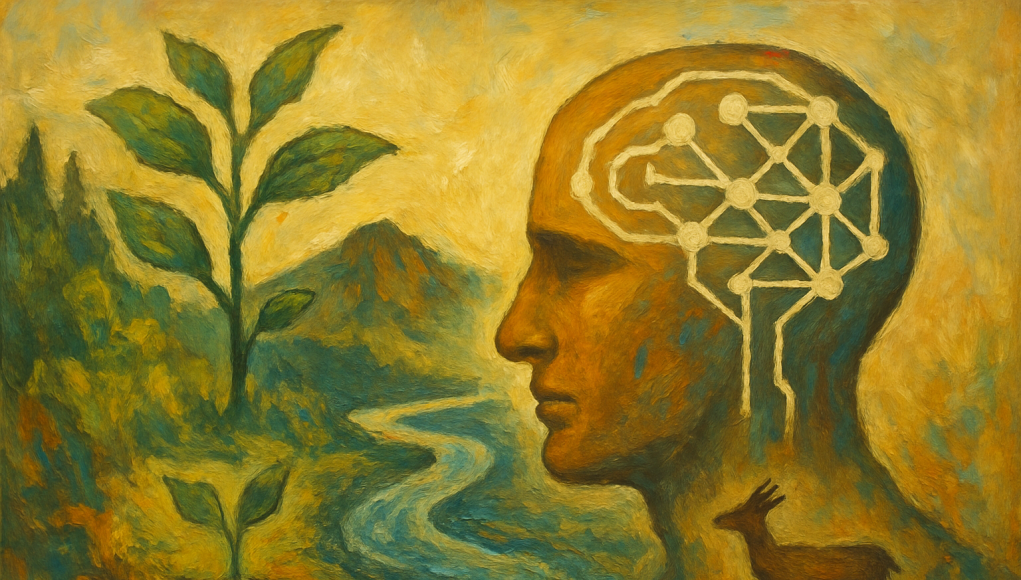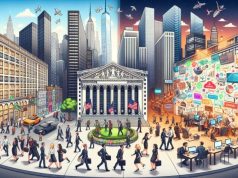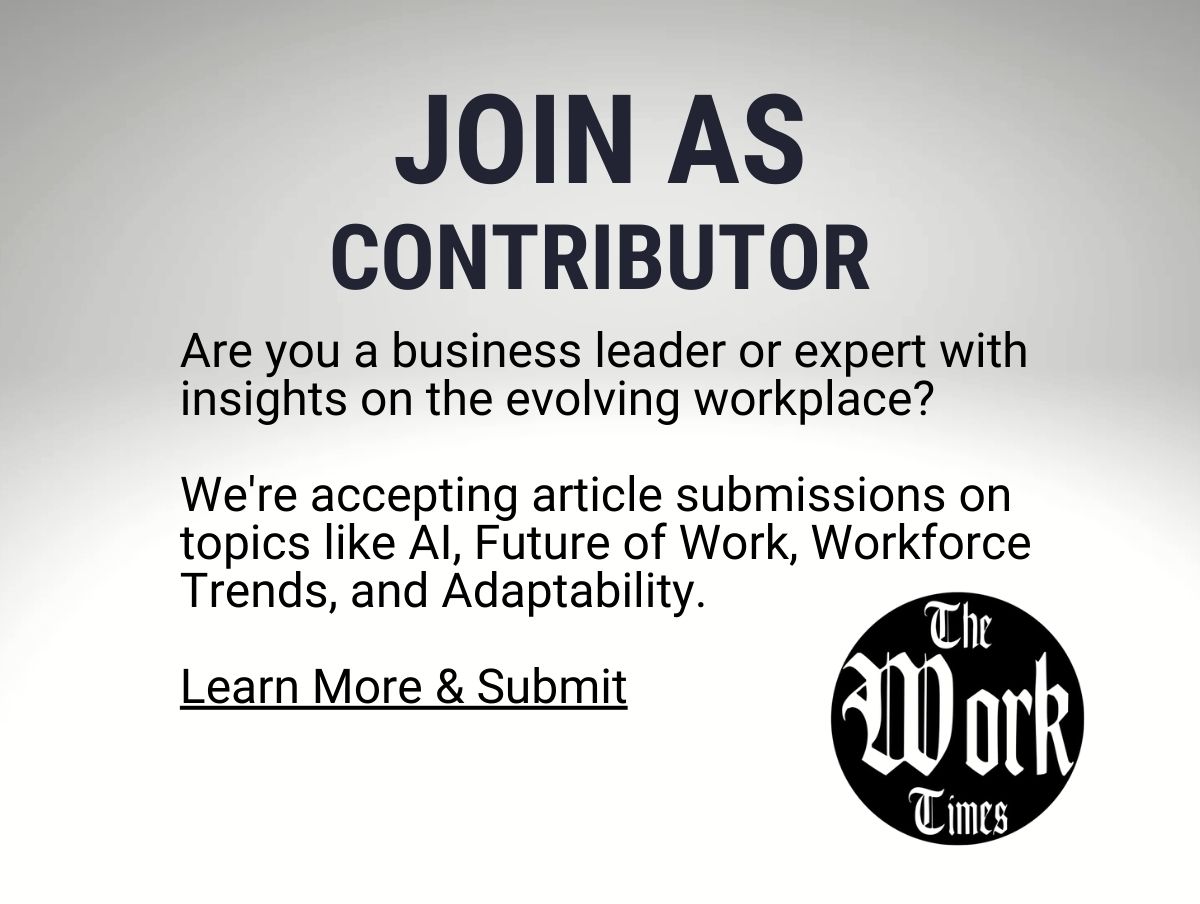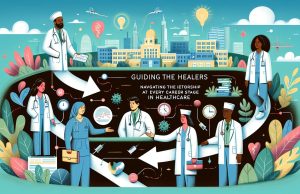🧠 Reflections from the Frontier: What OpenAI Can Teach Us About Building Bold, Compassionate Organizations
In the wild, the most resilient ecosystems aren’t the ones with the fastest predators—they’re the ones where symbiosis thrives. Where energy flows freely. Where balance evolves with time.
The same, it turns out, is true in work.
Earlier this week, a former OpenAI engineer published a stunningly candid account of life inside one of the most ambitious companies in modern history. There were no scandals, no exposés—just a thoughtful narrative about what it felt like to build at the edge of possibility, inside an organization growing faster than its systems could keep up.
More at: https://calv.info/openai-reflections
As I read through it, I didn’t see just a tale of AI research or codebase sprawl. I saw a mirror—one that reflects back the deep tradeoffs any mission-driven organization faces when scaling speed, talent, and impact all at once.
This isn’t a post about OpenAI. This is a post about us—those of us trying to build the next 10x team, the next breakthrough product, the next regenerative organization powered by people, not policies.
And so, here it is:
Five things we should learn from OpenAI. Five things we must unlearn if we want to grow without fracturing. And what it all means for building teams of Worker1s—those rare individuals who move fast, think deeply, and care widely.
Let’s begin, not with a roadmap—but with momentum.
How bold organizations grow, break, and (sometimes) evolve into ecosystems of brilliance.
🌱 Learning 1: Velocity Over Bureaucracy — Empower Action, Not Agenda Slides
In most companies, the journey from idea to implementation resembles an obstacle course designed by a committee with a passion for delay. Every initiative must pass through the High Council of Alignment, a series of sign-offs, and a platform review board that hasn’t shipped anything since 2014.
OpenAI flips this script. The author of the post describes an environment where action is immediate, teams are self-assembling, and permission is implied. The Codex product—a technically intricate AI coding agent—was imagined, built, optimized, and launched in just 7 weeks. No multi-quarter stakeholder alignment. No twelve-page RFPs. Just senior engineers, PMs, and researchers locking arms and building like their mission depended on it.
This isn’t velocity for the sake of vanity. It’s focused urgency—the kind that happens when the stakes are high, the vision is clear, and the culture celebrates shipping over showmanship.
🧠 Worker1 Takeaway: Build environments where decisions happen close to the work, and where speed is a reflection of clarity, not chaos. Empower people to build the bridge while walking across it—but ensure they know why they’re crossing in the first place. High-functioning teams aren’t fast because they skip steps; they’re fast because they skip the ceremony around steps that no longer serve them.
🧹 Unlearning 1: The Roadmap is Sacred — But Innovation Respects No Calendar
In many orgs, the roadmap is treated like an oracle. It is sacred. Immutable. To challenge it is to threaten alignment, risk perception, and someone’s OKRs.
But at OpenAI, there is no mythologizing the roadmap. In fact, when the author first asked about one, they were told, “This doesn’t exist.” Plans emerge from progress, not the other way around. When new information comes in, the team pivots. Not eventually—immediately. It’s not that they’re disorganized; it’s that they understand the cost of following a bad plan for too long.
This isn’t just agility—it’s philosophical humility. It’s the recognition that the terrain is unknown, and the map must be sketched in pencil.
🧠 Worker1 Takeaway: Burn your brittle roadmaps. Replace them with living strategies that adapt to signal, not structure. The goal isn’t to predict the future—it’s to be responsive enough that your best people can shape it. In a Worker1 culture, planning is a scaffolding for insight—not a cage for creativity.
🧱 Learning 2: High-Trust Autonomy Works — Treat People Like Adults, and They’ll Build Like Visionaries
At OpenAI, researchers aren’t treated like cogs in a machine—they’re given the latitude to act as “mini-executives.” This isn’t a metaphor. They launch parallel experiments, lead their own product sprints, and shape internal strategy through results, not role. If something looks promising, a team forms around it—not because it was mandated, but because curiosity and capability magnetized collaborators.
Leadership is active, but not suffocating. PMs don’t dictate; they connect. EMs don’t micromanage; they shield. The post praises leaders not for being loud, but for hiring well and stepping back. That kind of trust isn’t accidental—it’s cultural architecture.
🧠 Worker1 Takeaway: High performance begins with high context and low control. Autonomy isn’t the absence of oversight—it’s the presence of trust, plus access to purpose, clarity, and support. If you want Worker1s, stop treating them like interns who just graduated from a handbook. Treat them like visionaries in training—and some of them will surprise you by already being there.
🧹 Unlearning 2: Command-and-Control Isn’t Control—It’s a Bottleneck in Disguise
In traditional hierarchies, decision-making gets conflated with authority. You wait for the director to sign off, the VP to align, and the SVP to get back from their offsite. This cascade delays action, kills momentum, and worst of all—it erodes ownership. People stop acting like they own outcomes and start acting like they’re auditioning for approval.
OpenAI reveals the fallacy here. Teams move fast not because they’re reckless, but because decision rights sit close to execution. Codex didn’t require a cross-functional summit; it required competence, context, and coordination. Not a permission slip—just a runway.
🧠 Worker1 Takeaway: Dismantle decision bottlenecks. Build trust networks, not approval pipelines. Empower execution at the edges, and hold teams accountable for clarity, not conformance. If your team has to wait three weeks to get a “yes,” they’re already behind. If they’re afraid to act without one, you’ve trained them to underperform.
🧪 Learning 3: Experimentation is a Virtue — Let Curiosity Lead, and Impact Will Follow
At OpenAI, much of what ships starts as an experiment—not a roadmap item. Codex, as detailed in the post, began as one of several prototypes floating in the ether. No one assigned it. No exec demanded it. It simply showed promise—and so a team formed, rallied, and scaled it into a product used by hundreds of thousands within weeks.
This isn’t accidental. OpenAI’s culture makes it safe to tinker and prestigious to ship. You don’t need a 90-slide deck to justify exploration. You need enough freedom to explore, and enough rigor to measure whether you’re going in the right direction.
🧠 Worker1 Takeaway: Encourage tinkering, not just tasking. Give teams permission to chase ideas that spark their curiosity—but demand that curiosity be tethered to learning, not just novelty. Innovation doesn’t emerge from alignment; it emerges from discovery. Build organizations where side quests can become system upgrades.
🧹 Unlearning 3: Centralized Planning ≠ Strategic Thinking
In many companies, strategic planning is treated as a ritual. A committee of senior leaders gathers each quarter to sketch the future. Then, teams are handed pre-chewed priorities, dressed in jargon, and told to execute with “urgency.”
But OpenAI shows us that great strategy often emerges bottom-up, from the people closest to the work. Their best products aren’t those that were top-down-mandated—they’re those that organically earned attention by solving something real. Strategy, here, is less about control and more about curation—not picking winners in advance, but noticing when momentum forms and knowing when to bet big.
🧠 Worker1 Takeaway: Shift from strategic prescription to strategic detection. Trust your people to identify what matters—then give them the support to scale it. Strategy is no longer a document; it’s a dynamic. Let your org become sensitive to signal and fast to amplify the right noise.
🎯 Learning 4: Safety is a Shared Ethic — Not a Siloed Team
One of the most powerful truths in the OpenAI reflection? Safety isn’t relegated to a compliance team in a windowless room. It’s woven into the fabric of the org. From product teams to researchers, everyone is at least partly responsible for considering the misuse, abuse, or misinterpretation of their work.
The reflection highlighted how safety at OpenAI is pragmatic: focusing on real-world risks like political bias, self-harm, or prompt injection—not just science-fiction scenarios. In essence, safety is treated as engineering, not PR.
🧠 Worker1 Takeaway: If you’re serious about building ethical, resilient systems, don’t make safety a department. Make it a reflex. Train everyone to ask not just “Will it work?” but “Who might this hurt?” Compassion isn’t a delay in innovation—it’s its most powerful safeguard. Worker1s don’t just ask what they can do—they ask what they should do.
🧹 Unlearning 4: Compliance Isn’t Culture — It’s the Minimum, Not the Mission
Many companies believe that publishing a Responsible AI page or running an annual ethics training is enough. They treat safety as a checkbox—or worse, a burden to innovation.
But OpenAI’s model reminds us that ethical foresight isn’t a brake pedal—it’s a steering wheel. Their product decisions are shaped in part by “what could go wrong,” not just “how fast can we launch.” That foresight doesn’t slow them down—it prevents them from launching products they’ll regret.
🧠 Worker1 Takeaway: Shift your mindset from compliance-driven ethics to community-driven safety. Embed foresight into sprints. Encourage red-teaming. Build systems where feedback from the field informs the next iteration. Don’t rely on disclaimers to fix what design should have prevented.
🚀 Learning 5: Fluid Teams Build Rigid Momentum — Flexibility Fuels Impact
In most companies, team structures resemble concrete—poured, set, and rarely revisited. Reallocating talent often requires approvals, reorgs, or HR-sponsored retreat weekends.
At OpenAI, teams behave more like gelatinous organisms—fluid, responsive, and capable of rapid reconfiguration. When Codex needed help ahead of launch, they didn’t wait for a new sprint cycle—they got the people the next day. No bureaucratic tap-dancing. Just the right people at the right time for the right mission.
This agility doesn’t come from chaos. It comes from clarity of purpose. People knew what mattered, and they weren’t locked into titles—they were aligned with outcomes.
🧠 Worker1 Takeaway: Design your teams like jazz ensembles, not marching bands. Roles should be portable, not permanent. Talent allocation shouldn’t wait for Q3—it should reflect real-time need and momentum. Worker1 organizations aren’t rigid—they’re responsive.
🧹 Unlearning 5: Org Charts Are Not Maps of Value
Traditional businesses operate like caste systems disguised as org charts. Status flows from position, not contribution. Mobility is rare. Cross-functional help is treated like a “favor” instead of a normal operating mode.
But as OpenAI shows, value isn’t where you sit—it’s what you do. A researcher can become a product shaper. An engineer can seed a new initiative. Teams don’t operate based on headcount; they operate based on gravitational pull.
🧠 Worker1 Takeaway: Stop treating your org chart like the blueprint of your business. It’s a skeleton, not a nervous system. Invest in creating mobility pathways, so your best talent can chase the problems that matter most. A title should never be a cage—and a team should never be a silo.
🌍 The Takeaway: Don’t Just Build Faster—Build Wiser
OpenAI isn’t a roadmap to follow. It’s a mirror to look into. It shows us what’s possible when ambition is matched with autonomy, when safety is treated as strategy, and when the best ideas aren’t trapped behind organizational permission slips.
But let’s not romanticize chaos, or confuse motion with progress.
The true lesson here isn’t speed. It’s readiness. It’s having the systems, culture, and people that allow you to adapt without unraveling—to move fast without breaking trust.
For those of us building Worker1 ecosystems—where high-performance and high-compassion are non-negotiable—this means designing cultures that move like forests, not factories. Rooted in purpose. Flexible in form. And regenerative by design.
So, whether you’re scaling a product, a team, or a mission, remember: The future doesn’t need more unicorns. It needs more ecosystems. And those are built not by plans, but by people bold enough to care and wise enough to change.
Let’s build with that in mind.

